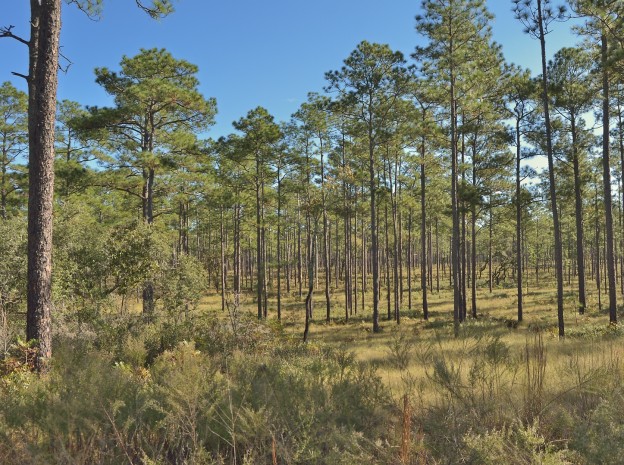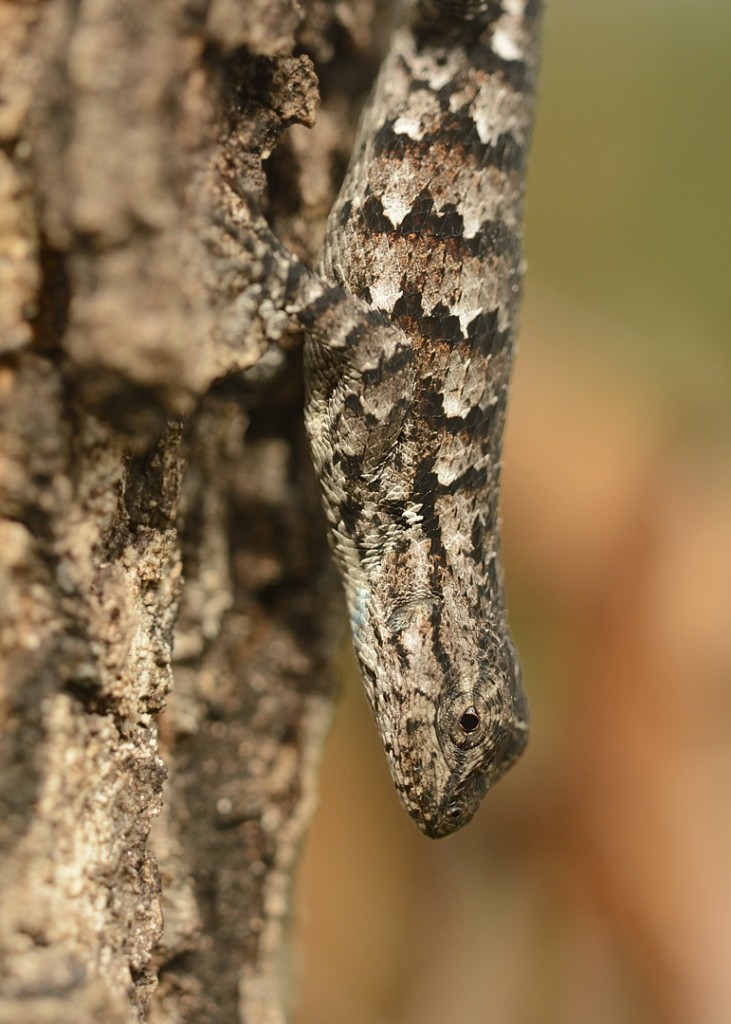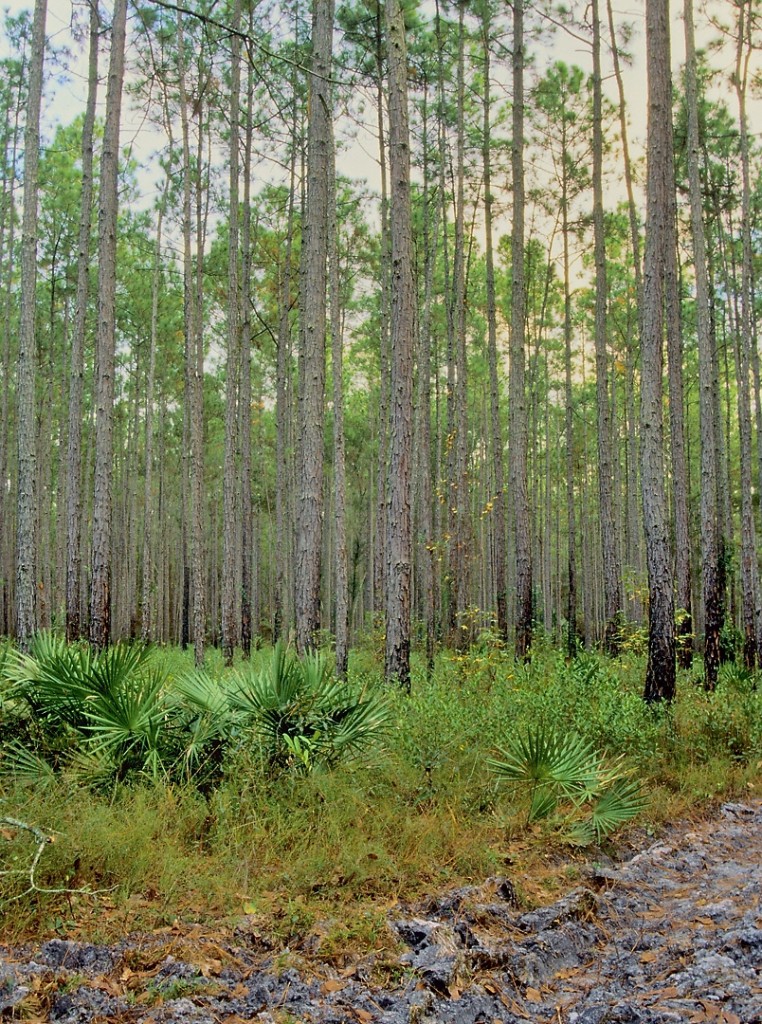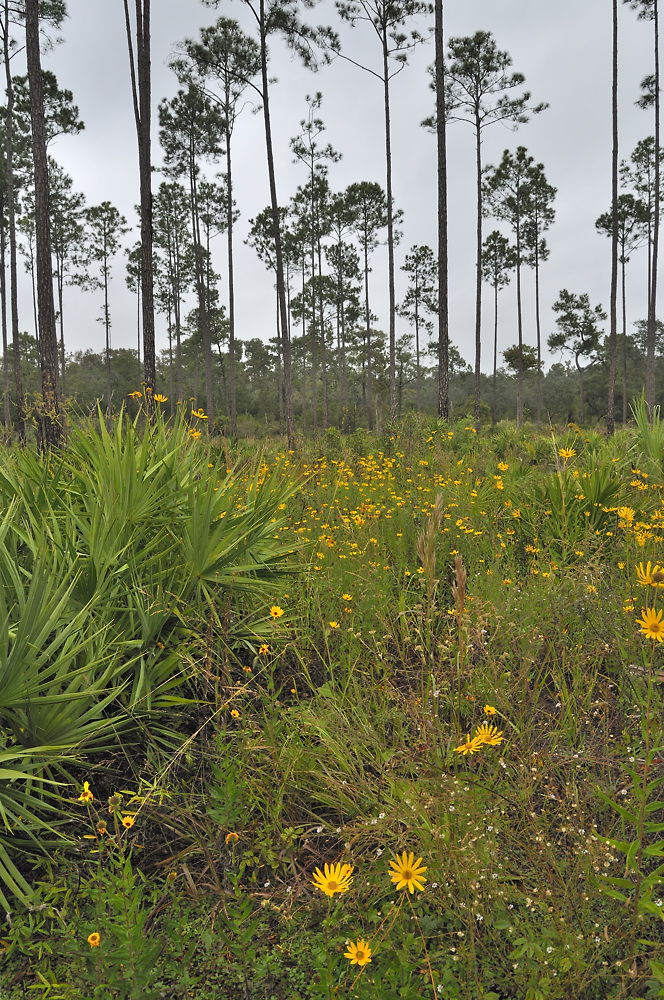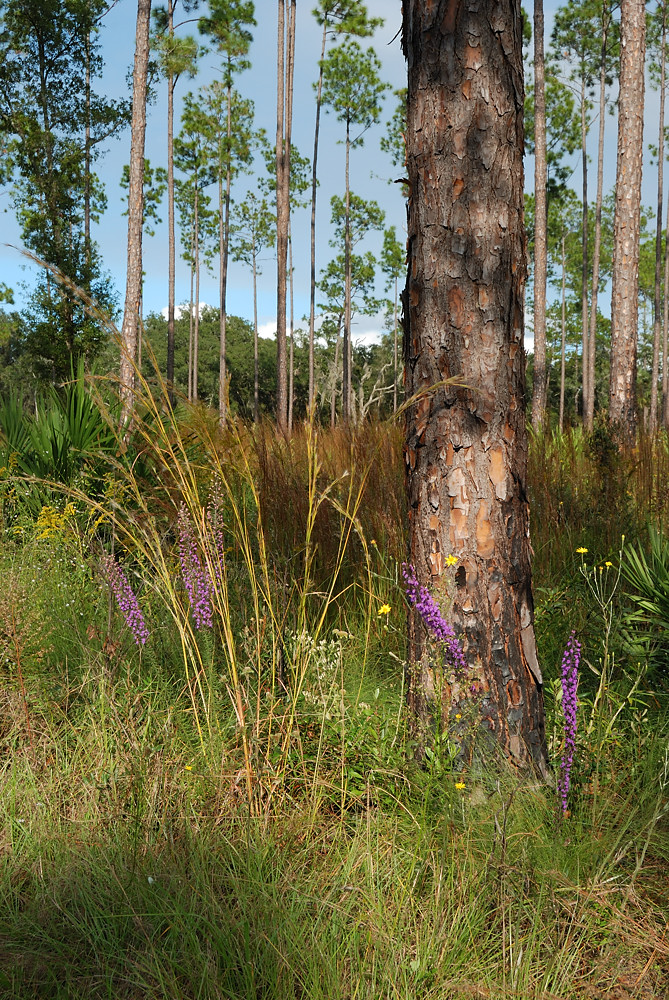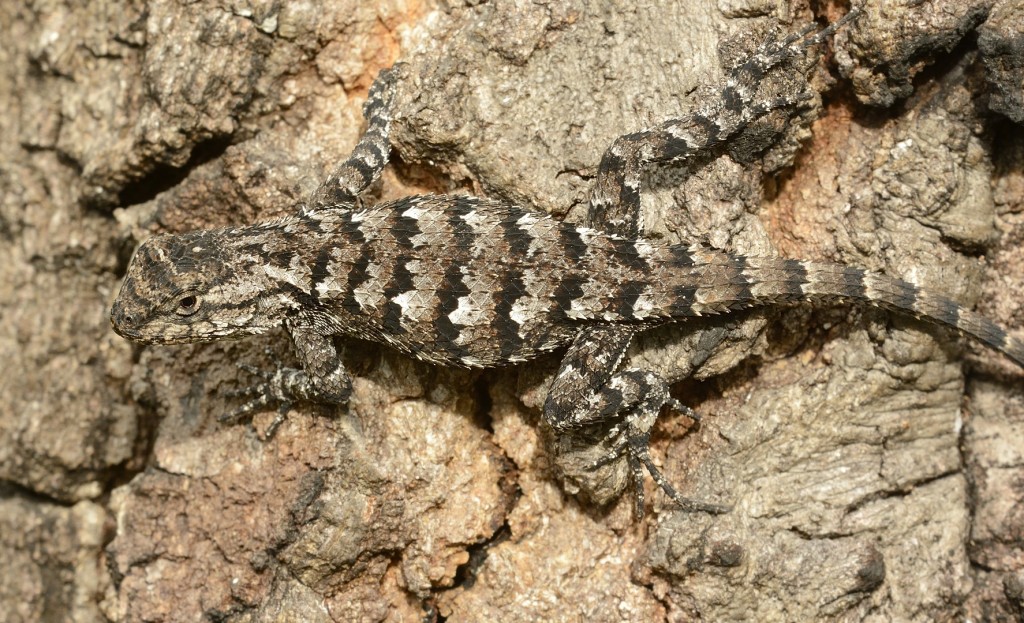
Sceloporus undulatus, the eastern fence lizard. Members of the genus Sceloporus are fondly called scelops by herpers.
November 24, 2013
The outstanding scientific discovery of the twentieth century is not television, or radio, but rather the complexity of the land organism. Only those who know the most about it can appreciate how little we know about it. The last word in ignorance is the man who says of an animal or plant, “What good is it?” If the land mechanism as a whole is good, then every part is good, whether we understand it or not. If the biota, in the course of aeons, has built something we like but do not understand, then who but a fool would discard seemingly useless parts? To keep every cog and wheel is the first precaution of intelligent tinkering.
– Aldo Leopold, The Round River
I found a single eastern fence lizard at Lake Woodruff National Wildlife Refuge last Sunday. I was doddering around the mix of habitats near the Myacca Parking lot, and noticed the scelop, who had already seen me, perched cryptically against bark in the open pine woods. It seemed like a sighting worthy of commemorating to me. Not because I found a scelop, though that by itself is cause for a bit of joy for me. I don’t see fence lizards all that often, and when I do, it is usually in one of the relatively small number of places I’ve seen them before. Once established, the populations I’ve had experience with seem pretty stable and predictable between years.
I remember seeing, and catching, my first Sceloporus when I was a kid in Northern Virginia. I kept it as a “pet” for a few days, but couldn’t find a reliable source of food and let it go. It was the only scelop I ever saw when I was a kid in Virginia, though I found one reliable population in Prince William Forest Park when I was in grad school there years later. Lizards were pretty much an exotic mystery to me during my Virginia years.
I first begin seeing fence lizards regularly when I moved to Gainesville for grad school in 1979. One of the entrances to San Felasco Hammock featured a tract of turkey oak sandhills with a somewhat accessible trail through much of it. I spent a fair amount of time there in the 80’s, and saw fence lizards regularly. Always in the same specific locations within this piece of sandhills. So my impression of fence lizards is they are pretty much stay-at-home beasts, not venturing far from their relatively restricted home ranges.
Finding a single scelop at Woodruff seemed significant to me because of these spatial traits I had intuited. I’d never seen one in this particular area before, though years ago there was a population located maybe a mile to the south, along one of the fire roads into the mixture of planted pine forest and xeric hammock. Some big slabs of broken concrete, apparently from an old stock-dipping tank, provided physical shelter and thermal stability for the fence lizards, and I found them there nearly every time I made the hour-long hump down the soft sand fire road to get there.
On the other hand, the single lizard I found on Sunday is apparently a colonizer, a potential co-founder of a new population. And that’s cool.
Twenty plus years ago when I first began visiting Woodruff, the area around what is now the Myacca parking lot was mostly even-aged planted slash pine. It was uniform, lacking in structural diversity, and boring. Sometime in the last decade, refuge management initiated a management program intended to restore this dense, monotonous pine stand into some semblance of the habitat type that existed there prior to anthropogenic disturbance – sandhills.
For me, that single fence lizard spoke volumes about the success of the sandhills restoration. In the relatively few years since the stand was severely thinned and then subjected to regular controlled burns, this tract of pines has undergone an amazing transformation. Vegetation diagnostic of sandhill habitats has begun to return and establish reproducing populations. Wiregrass, Aristida stricta, one of the defining species of sandhills, is now present throughout and in the process of setting seed. Ecologist Reed Noss argues persuasively in his splendid book Forgotten Grasslands of the South: Natural History and Conservation that while sandhills is sometimes thought of as a forest community, in reality it is a grassland that happens to feature sparsely scattered trees. Other sandhill flora is especially evident in the fall, when the yellow and purple composites begin their spectacular flowering displays. Liatris, Carphephorus, Coreopsis, Helianthus…these genera and more are now regular and conspicuous inhabitants of the diverse ground cover. The change in visual appeal of this piece of habitat now compared to what it looked like prior to restoration is like the difference between a lump of coal and a sparkling diamond.
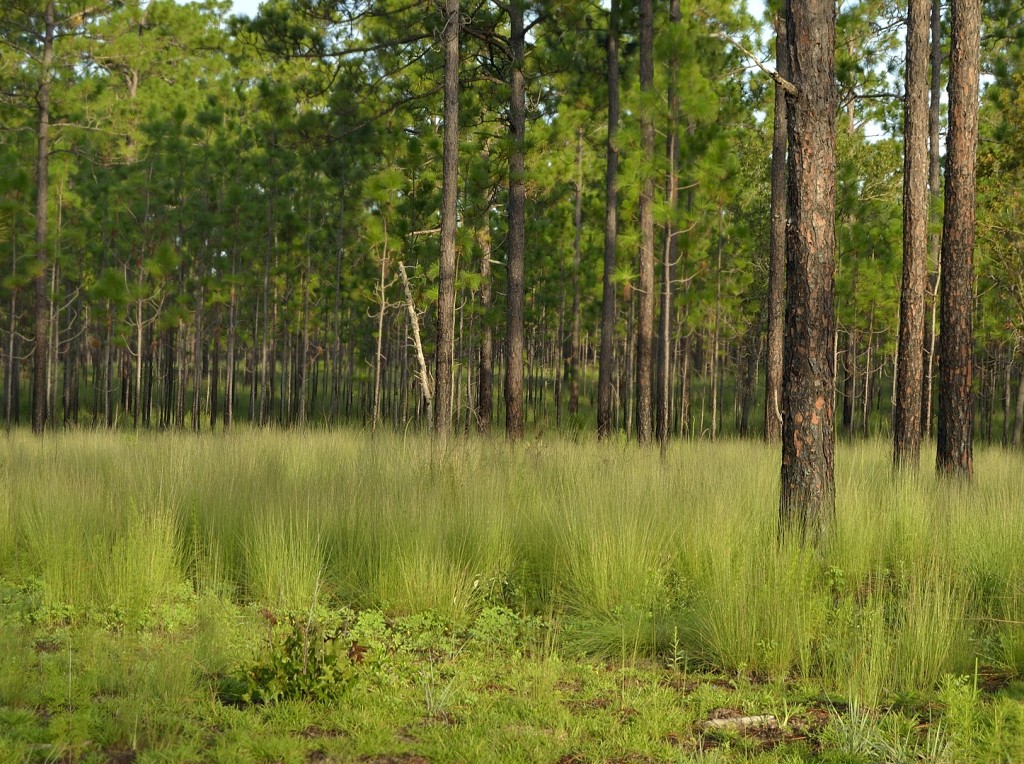
Wiregrass (Aristida stricta) is a clump-forming grass that dominates the ground cover of mature sandhills, and requires recurrent fires to flower and set seed.
Restoring a habitat to a site where it occurred in the not too distant past is sometimes made a bit easier by the presence of a substantial seed bank remaining from the original inhabitants. Buried seeds from a variety of sandhill species that once flourished at the Myacca site may have contributed to some of the dramatic recovery and diversification of the flora. But the lizards had to hoof it here from somewhere else. And apparently found the restored sandhills to their liking. Well done, Woodruff land managers and ecologists, well done.
The profound wisdom of Aldo Leopold quoted at the beginning of this piece was simplified and popularized by ecologist Paul Ehrlich in this dictum: “the first rule of intelligent tinkering is to save all the parts”. I don’t think anyone would ever accuse Homo sapiens of intelligent tinkering with their planet, and indeed we haven’t saved all the parts. Habitat restoration projects like the one at Woodruff are an admirable way to start putting some of the remaining parts back together in ecologically meaningful ways.
The sandhills restoration project at Woodruff is one facet of a larger effort to restore sandhills habitat throughout the uplands of central Florida, where it was once one of the predominant habitat types. Outright destruction of habitat converting it to commmercial or agricultural uses, combined with decades of fire suppression, have contributed to a drastic decline in the extent of this characteristic and charismatic Florida plant community. In the absence of regular (every one-several years) low-level fires, hardwood tree species eventually invade sandhills and replace it with hammock, given enough time. Foresters at nearby Tiger Bay State Forest have been engaged in similar restoration projects along the Rima Ridge tract in the last several years. Ambitious and enterprising Volusia County conservationist Steve Strawn is in the process of restoring a large tract of private land, used for decades for pasture and citrus farming, back to sandhills near DeLeon Springs.
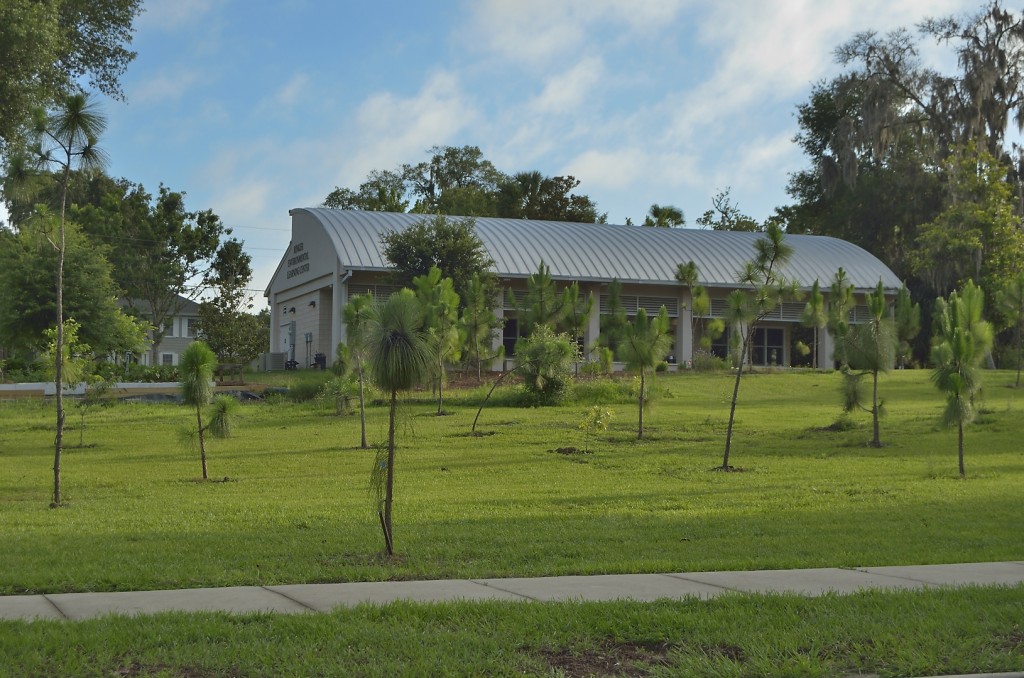
Longleaf pines are the anchor species for the developing Volusia Sandhill Ecosystem Teaching Landscape at Stetson University.
Even my home institution is now engaged in sandhills restoration. Stetson biologist Dr. Cindy Bennington and Gillespie Museum director Dr. Karen Cole are several years into an innovative project converting a former lawn of less than an acre into a sandhills teaching landscape. No seed bank to help with establishment here – every plant species characteristic of a sandhills ecosystem will have to be reestablished by hand. This site is so disturbed and modified that rumor has it an in-ground swimming pool is buried there somewhere. Which makes it all the more impressive that in just a few years since the first plantings, the change in this small piece of land has been striking. The educational impact on the many students who have contributed to this project and on those who will be exposed to this novel resource will surely surpass the ecological benefits resulting from restoration of this piece of land to its former state.
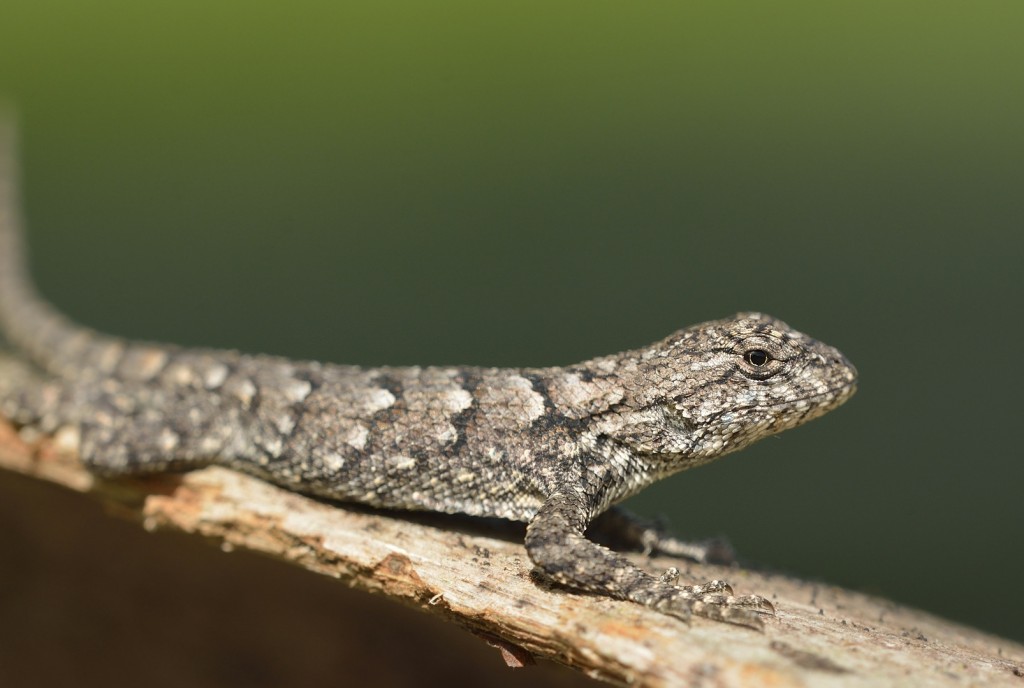
True success of the colonizing Myacca scelop will have occurred once the little hatchlings like this guy start showing up there.
The jewel in the crown of the teaching landscape could well be colonization of this patch by Sceloporus undulatus. Doesn’t seem likely, though; the nearest populations are at least several miles away, and the little squamates would have to brave numerous road crossings just to reach the site. Maybe, someday, I’ll have to give them a little help getting there.
